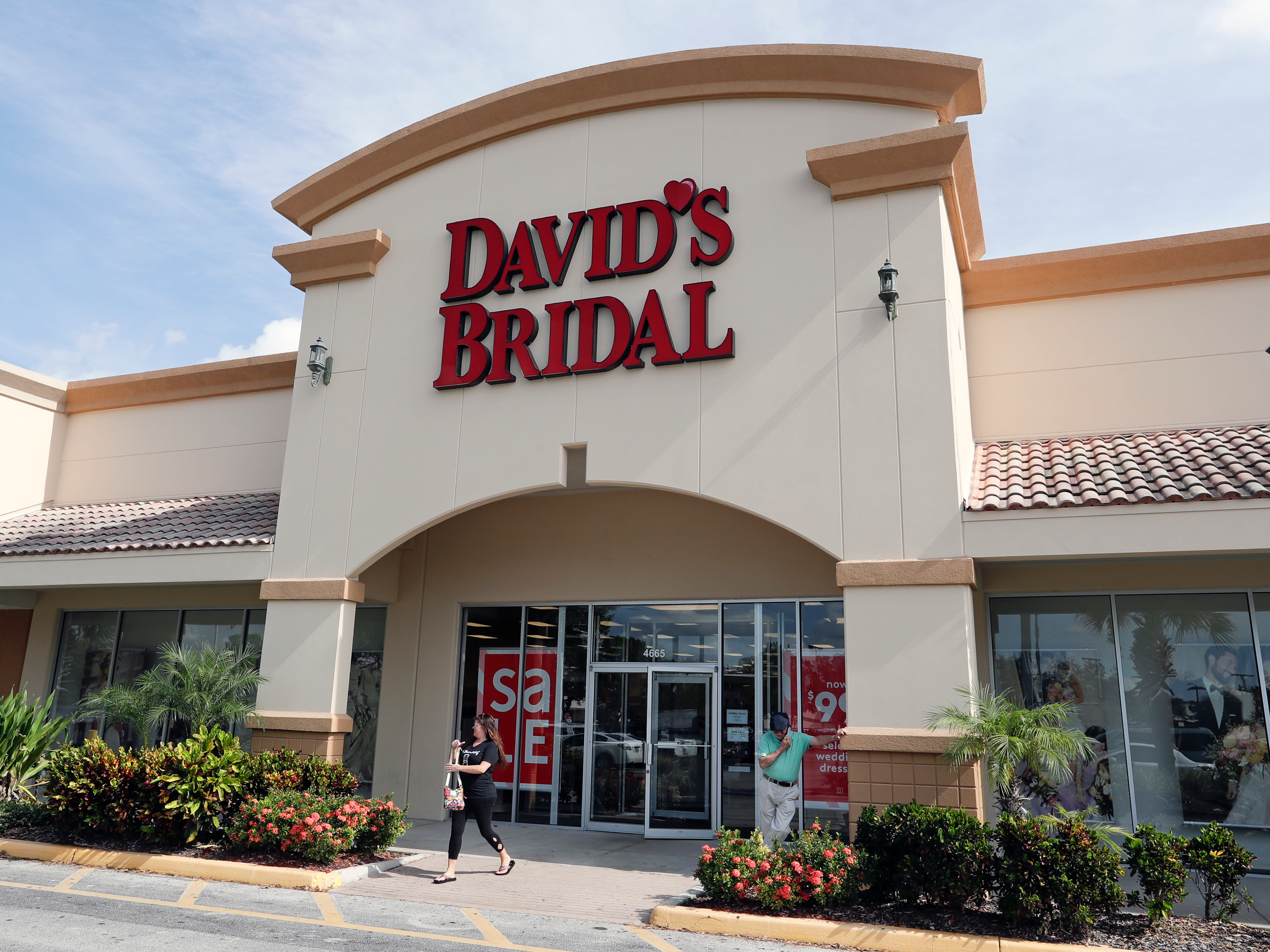- David’s Bridal has been around since 1950. It started as a local bridal salon in Fort Lauderdale, Florida.
- Over the past 69 years, the company’s value has both skyrocketed and drastically dropped.
- This is how both wedding dresses and the chain have evolved and changed alongside the wedding industry.
- Visit INSIDER’s homepage for more stories.
If you’re looking to find an affordable wedding dress, you’re more than likely going to have checked out one of the 300-plus David’s Bridal stores across North America.
The formal-wear chain has been in our lives for almost 70 years, through questionable bridal fashion and the slow decline of marriage in America.
Keep scrolling to learn more about the brand’s history.
David’s Bridal started as a neighborhood bridal salon in Fort Lauderdale, Florida, in 1950.

The original salon was owned by David Reisberg.
Brides in the '50s favored ballgown-style dresses with full skirts.

Strapless dresses were still seen as "kind of risqué," according to Mara Urshel, co-owner of famous boutique Kleinfeld Bridal, so it was all about the sleeves.
In 1972, Floridian Phillip Youtie purchased the salon with optimistic ideas to expand David's Bridal.

By the '70s, wedding dresses had become more simple and less ornate. It was all about the hippie-chic, flowy dresses.
From 1973 through 1988, Youtie opened 18 more salons throughout Florida, primarily operating out of leased spaces in department stores.

At the time, wedding dresses were almost always exorbitantly priced. Youtie sought to cater to brides who didn't want to spend thousands of dollars on a dress they'd likely only wear once.
Throughout the '80s, dresses became more over-the-top, with puffy sleeves and giant skirts again.

Youtie continued to notice the change in brides and weddings - the '90s would become a completely different story.
In 1990, Youtie and business partner Steve Erlbaum opened the first David's Bridal Warehouse in Hallendale, Florida.

The warehouse location was unlike any other bridal salon - it carried all sizes, not just sample sizes, and had overstock dresses at a fraction of the cost.
But while the dresses were cheap, everything else cost extra. "We did no alterations, and if anyone needed a bobby pin, we would charge them for it," said Youtie, according to The List.
In 1999, David's Bridal went public.

Just a year later, David's Bridal was acquired by May's Department Stores for $436 million, according to The Wall Street Journal.
Throughout the 2000s, David's Bridal expanded, and began selling other formal wear like prom dresses and bridesmaid dresses.

In 2003, The New Yorker compared the relationship between David's Bridal and independent bridal salons to that of Barnes & Noble and independent bookstores - the corporation was taking over. As many as 20% of all bridal gowns were purchased at David's.
Part of David's Bridal's charm remained its commitment to selling sizes that fit everyone, not just sample sizes.

In the 2000s, strapless dresses became the norm, and dresses also became more form-fitting.
This plus-size mannequin was an attempt to keep up with real American women, not just models — and it worked. In 2012, the company was valued at $1 billion.

Clayton, Dubilier & Rice acquired David's Bridal in 2012, and announced its billion-dollar valuation in a press release.
However, as the number of weddings has declined overall in the US, David's numbers have as well.

According to PBS, the marriage rate is the lowest it's been in 150 years. Of course, less weddings means less sales.
To try and boost sales, the company has partnered with more upscale brands like Vera Wang.

Of course, the dresses were still more affordable than the average designer dress.
With the decrease in weddings, David's Bridal filed for bankruptcy in 2018.

The chain filed for bankruptcy in November 2018, but was able to keep its doors open. The company was over $700 million in debt at the time.
The brand is now offering free stylists and cheaper prices to cater to millennials.

The company emerged from bankruptcy in January 2019 by shrinking its debt by $450 million.
In order to keep up with trendy, affordable spots like Anthropologie and H&M, the stores are offering "lower priced dresses, free personal stylists in store, and more sizes."
It remains to be seen if the wedding giant can stay afloat for another seven decades.

As the wedding industry has shifted and changed, David's Bridal has remained an affordable way to find the dress of your dreams.
- Read more:
- David's Bridal features same-sex couple for the first time in new advertisement
- Millennials have a new attitude about weddings - and it's sending bridal stores into a downward spiral
- Bridal Crocs are apparently a thing now, and they're covered in sequins
- The 10 most popular wedding dates of 2019
